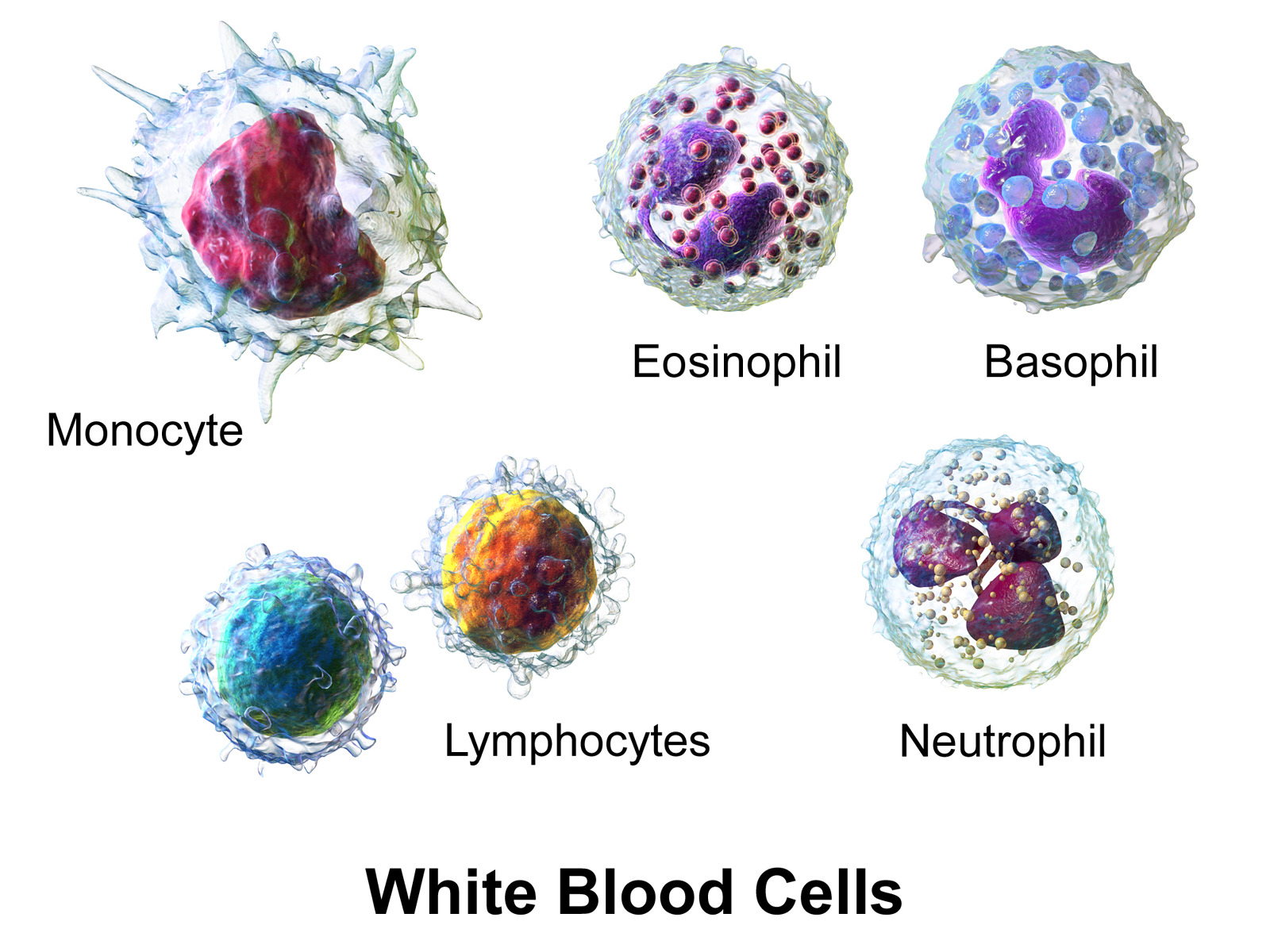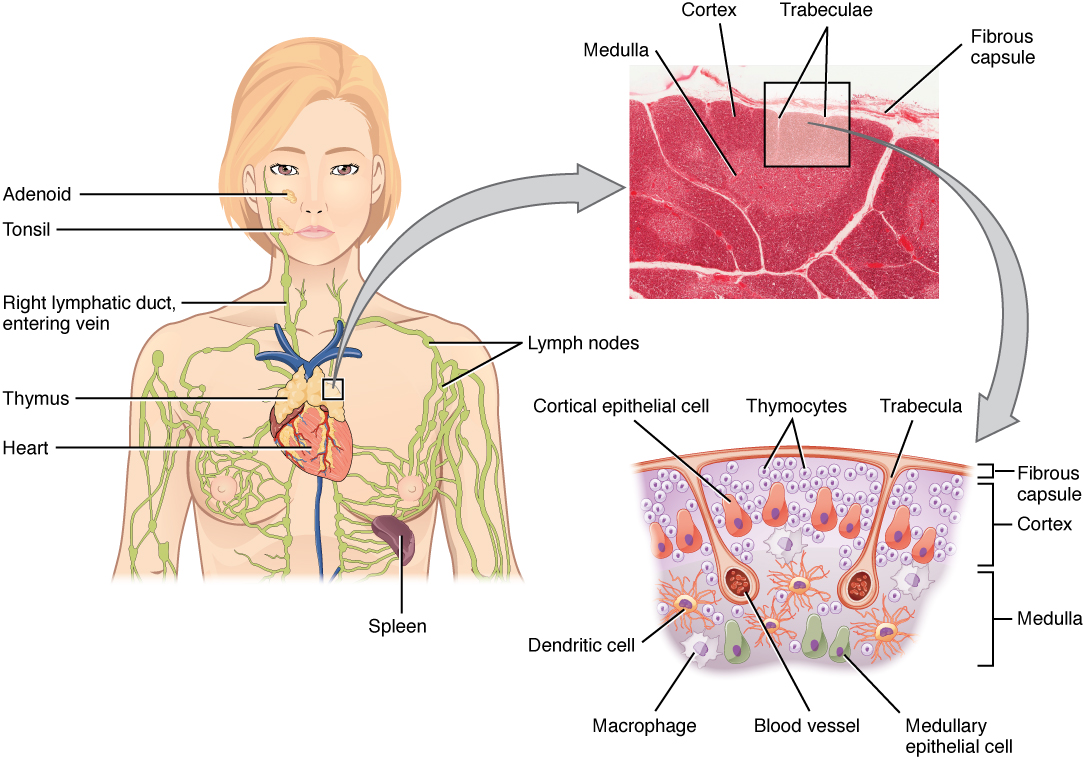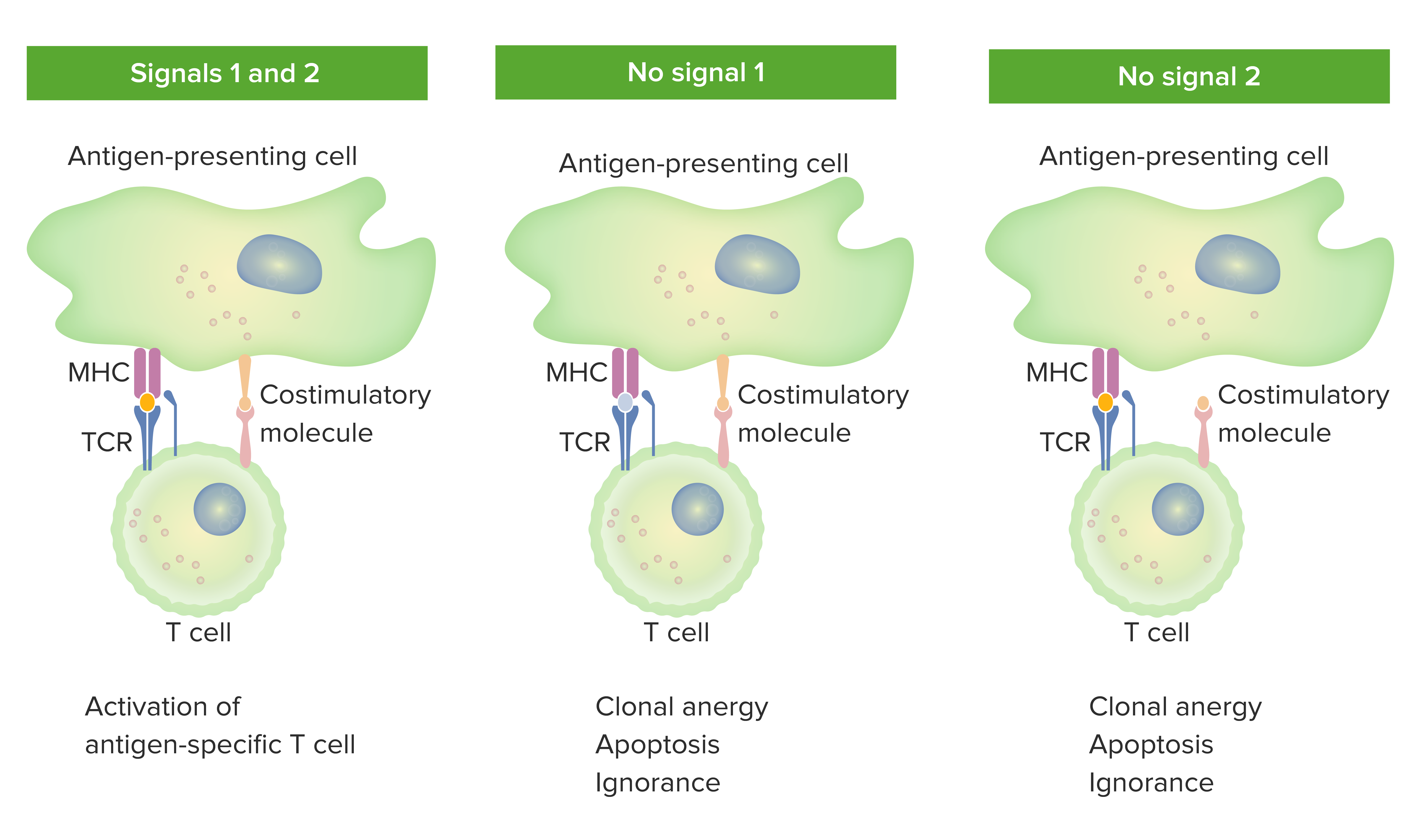Playlist
Show Playlist
Hide Playlist
Costimulation – Lymphocyte Activation
-
Slides Lymphocyte Activation.pdf
-
Reference List Immune System.pdf
-
Download Lecture Overview
00:01 In order to activate lymphocytes, stimulation through the antigen receptor alone is not sufficient. 00:10 You need what is referred to as co-stimulation. 00:16 So here we have a T-cell, that’s a naïve T-cell, it hasn’t encountered antigen before. 00:22 Its T-cell receptor is recognizing peptide MHC on the surface of an antigen presenting cell, like a dendritic cell. So this APC (antigen presenting cell) is showing peptide together with MHC to the T-cell receptor on the naïve T-cell. 00:38 But actually nothing’s happening, because that’s the only signal that the T-cell is getting. 00:44 And the result, if there is stimulation only through the antigen receptor, will be that there is actually functional inactivation of the T-cell; a process that is referred to as anergy. 00:56 So there’s no response and we have a form of immunological tolerance. 01:02 And this process of inactivating T-cells is very useful in preventing unwanted reactivity against self antigens. 01:13 However, in the context of infection, dendritic cells become activated by the Pathogen-Associated Molecular Patterns present on microbes. 01:24 And part of that activation of the dendritic cell, causes them to increase the expression of co-stimulatory molecules like the B7 molecules and also to release co-stimulatory cytokines such as interleukin-12. 01:40 So in the context of infection, dendritic cells up-regulate the co-stimulatory molecules and cytokines that are required for T-cell activation. 01:51 This will cause T-cells to themselves produce cytokines such as interleukin-2, and this will feed back onto the interleukin-2 receptor which is also expressed on these T-cells. 02:03 And you’ll get extensive proliferation following activation of these T-cells, the development of effector T-cells, T-cell survival, proliferation and differentiation. 02:14 The CD80 and CD86 B7 molecules are not the only molecules that are involved in co-stimulation. 02:21 So here we have an example of a dendritic cell that is expressing the molecule CD40 on its cell surface. 02:31 When the T-cell is stimulated by the dendritic cell, one of the things that can happen is that CD40 ligand becomes expressed on the T-cell. 02:47 And the CD40 ligand binds to the CD40 on the dendritic cell. 02:53 And this can lead the dendritic cell to express higher levels of B7. 02:59 So there’s a feedback loop whereby interaction of CD40 ligand on the T-cell with CD40 on the dendritic cell, causes the dendritic cell to increase its expression of the B7 molecule - CD80 and CD86; and also to release cytokines. 03:17 So the activated dendritic cells stimulate T-cell proliferation and differentiation. 03:23 They have on their cell surface all the molecules now required to do that. 03:27 They have MHC and peptide that can stimulate the T-cell receptor. 03:32 They have CD40 that stimulates through CD40 ligand. 03:36 And crucially, they have those all important B7 molecules that can co-stimulate via the CD28 molecule on the surface of the T-lymphocyte. 03:47 And also they’re producing cytokines that further aid in the activation. 03:51 So you have enhanced T-cell proliferation and differentiation resulting from these co-stimulatory signals.
About the Lecture
The lecture Costimulation – Lymphocyte Activation by Peter Delves, PhD is from the course Adaptive Immune System.
Included Quiz Questions
What is a ligand for cluster of differentiation 80 (CD80)?
- CD28
- CD86
- CD3
- CD4
- CD40
What is the role of co-receptors, such as CD80, on antigen presenting dendritic cells?
- Enhancing/stimulating T-cell response
- Reducing/inhibiting T-cell response
- Stimulates phagocytosis of pathogens
- Inhibits phagocytosis of pathogens
- Inhibits cytokine secretion by the T cells
Which of the following is most likely following the binding of CD40 to its ligand?
- Upregulation of B7 and cytokine release
- Upregulation of major histocompatibility complex on T cells
- Inhibition of cytokine release by the T cells
- Downregulation of major histocompatibility complex on T cells
- Downregulation of other co-stimulatory receptors
Customer reviews
5,0 of 5 stars
| 5 Stars |
|
5 |
| 4 Stars |
|
0 |
| 3 Stars |
|
0 |
| 2 Stars |
|
0 |
| 1 Star |
|
0 |






